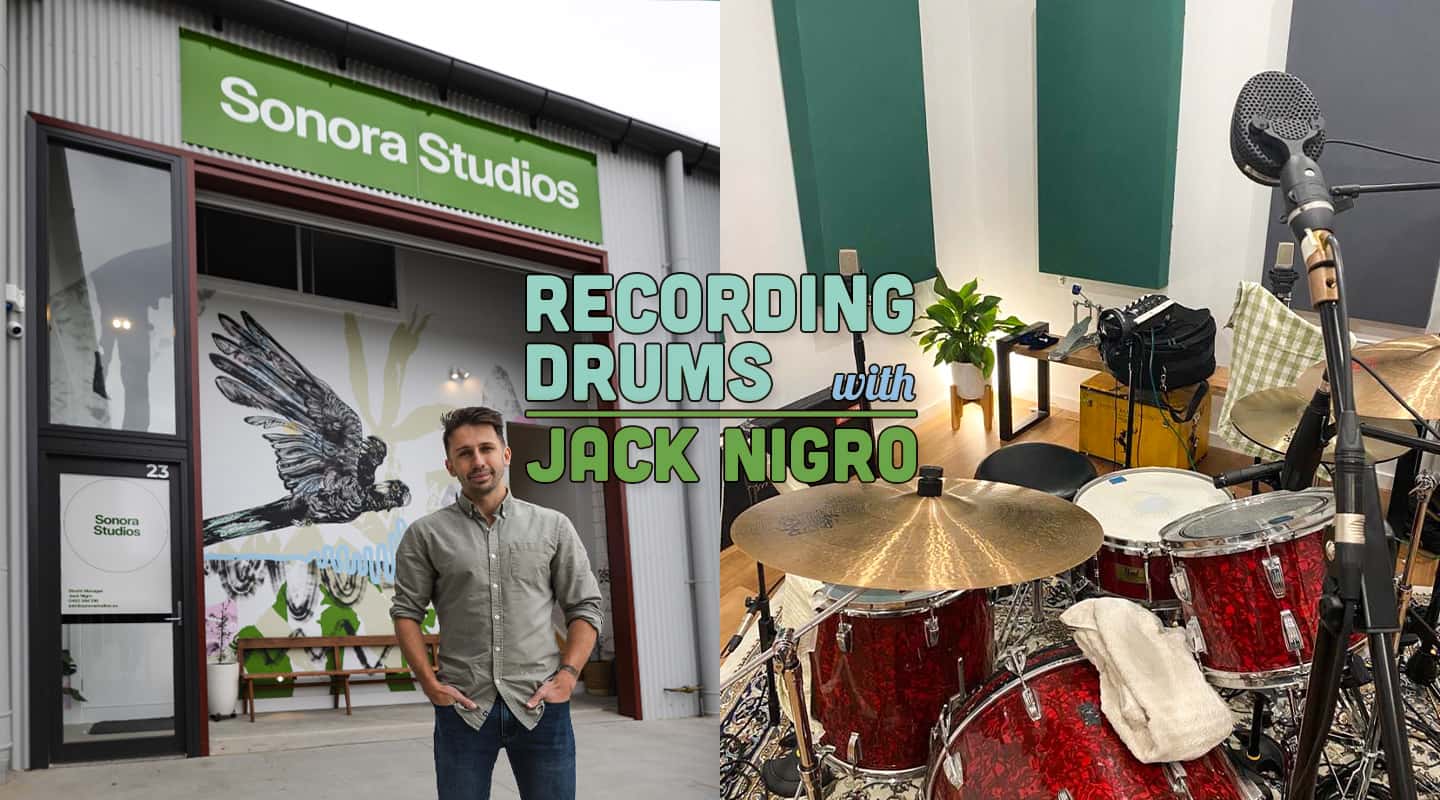
Recording Drums with Jack Nigro
Producer/engineer Jack Nigro (DMA's, Dune Rats, The Terrys) has just built and opened Sonora Studios on the Central Coast where he’s recording some of the vibiest indie music in the country. He shows us how he records drums.
Tutorial: Jack Nigro
Earlier on in my career, I spent years at Grove Studios as house engineer and had the pleasure of hosting many talented and knowledgeable audio engineers. Along the way I picked up many tips and tricks to add to my own bag of recording techniques. I wanted to share with you my go-to drum mic setup.
You can see from the input list which mic I favour for each element and also the preamp I generally use. Some of these are very standard and don’t require further explanation. Instead, I’ll dwell on the more interesting selections and positioning. Starting with the overheads.
OVERHEADS
This is a trick I picked up from a Steve Albini tutorial with the overhead placement behind the drummer. It’s not suitable if you need precise placement of the cymbals (say, pop or metal production) but I’m often working with Indie artists and I’m aiming for a drum sound that is more organic and ‘together’. This is where this technique comes into its own. That said, I did set up a hi-hat mic (god forbid we actually need a hi-hat turned up!).
The mics are placed equally distanced from the snare centre (as per normal) and I make an equilateral triangle between the two AKG 214s and the snare. I’m trying to recreate the triangle we aim for in our listening mix position.
The green tea towel you can see on the right, is in position to quieten the hi-hat mic into the overhead mic. It actually works quite well!
A few advantages I have found from this set up were:
- Having the overhead mics at the same height as the cymbals creates quite a nice even cymbal decay, and completely minimises any Doppler effect (or ‘whooshing’).
- Having the mics further away means the cymbals don’t have too much build up in the lower mids, so I don’t need to cut these frequencies and it allows me to preserver more of the bottom end of my toms and snare – a component I love in the sound of overheads.
- It also allows me to pick up plenty of snare and toms in the overheads, again, a sound I favour.
You can then also see a Coles 4038 placed right in the middle at the front of the kit. The Coles has a beautifully-even rolloff in the top end and a warm round bottom end. I keep the mic in the centre of the mix and it’s also the exact same distance to the snare centre as the rear overhead mics.
I love using mono close kit and room mics in my mix to help support my kick and snare close mics. Often engineers only use stereo ambient mics (stereo OHs, stereo rooms, for example) and this means the only centre mics in your mix are your close mics. Having these mono ambient mics can help create a great sense of depth to your drum tone.
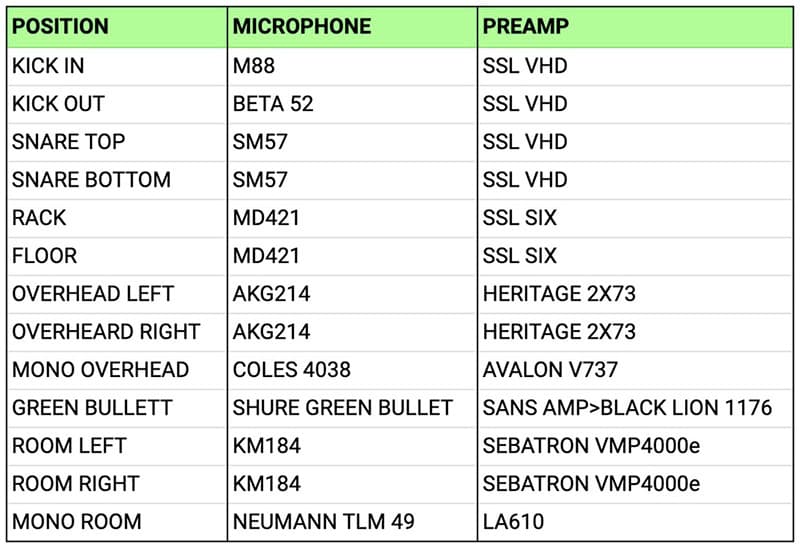

Having these mono ambient mics can help create a great sense of depth to your drum tone
ROOM MICS
I use a stereo pair of Neumann KM184s for room mics. As you can see from the picture, I keep them quite close to the ground. I love picking up low-end energy from my room mics, keeping them lower to the floor allows the kick and toms to compete against cymbal wash.
You can also see from this picture they are in an X/Y position angled slightly to the left of front of the kick.
There are a few reasons I do this:
- This position draws a direct line between the kick and snare. I see this angle as the centre of the kick, not directly in front of the kick skin. This can significantly help you avoid your room mics having the kick sounding louder in one ear and the snare in the other. You want your kick and snare to feel balanced, powerful and in the dead centre of these mics. This was a technique I learnt from renowned Australian engineer/producer Paul McKercher.
- I often use the X/Y position as it allows for better mono compatibility and phase relationship. As the capsules are right next to each other, they are picking up the same air compression/rarefactions in the room. I don’t often like my room mics sounding ultra-wide, I leave this space for guitars in a lot of my productions and if I need to gain extra width I can still do this through artificial reverbs. If I have access to 2x Coles 4038s I may do a similar technique in Blumlein.
In another photo you can also see there is a Neumann TLM149 in the far corner acting as a mono room mic. This mic is further back and picking up a larger room ambient tone. You can see it is also angled more towards the ground, setting the mic slightly off axis tames the high end of the cymbals, again creating a better cymbal/shells balance, something I am always aiming for with my ambient mics.
It is always better to get this relationship captured through microphones instead of later through EQ. Obviously I will almost always apply EQ, but the less we need to do the less we may face potential phase issues, which can be introduced through EQ.
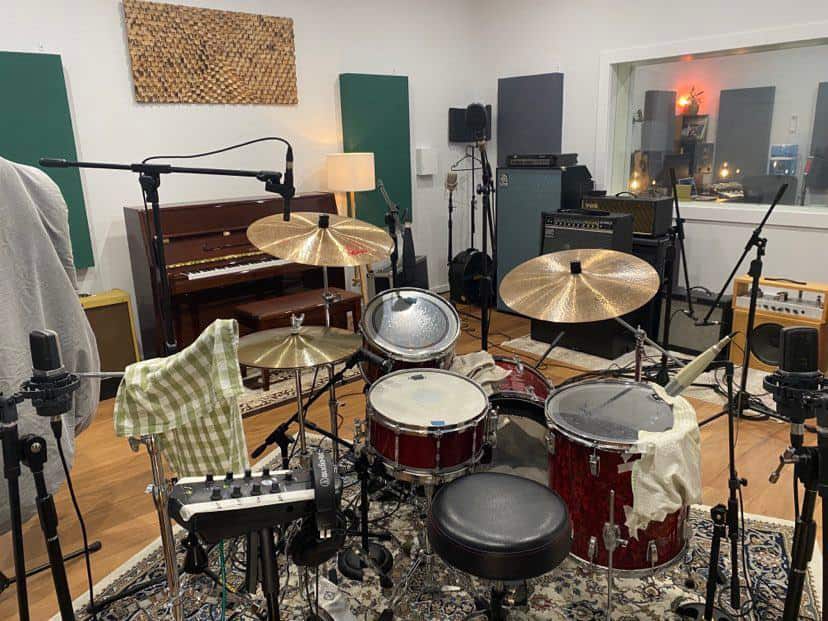

TOMS
I sometimes tape a tea towel onto the floor tom, to gently rest over the top of the tom. You will notice that no tape is actually touching the skin of the tom, it is attached to the shell. I don’t want to kill the resonance of the tom too much, by lightly placing the towel over the tom like this, it is essentially flapping on and off the skin when it is struck, acting as a very light dampener.
Hopefully you can also see that inside the tom I have some cotton balls freely resting on the bottom skin. This is doing a similar job as the tea towel. When the drummer strikes the tom the cotton balls bounce up, allowing some decay before landing and gently absorbing the energy. I highly recommend this technique!
You can also see in some of the other pictures I have placed a towel over the top of the kick drum next to the rack tom, this can help the floor tom and kick drum not set off resonance in the rack tom when they are struck.

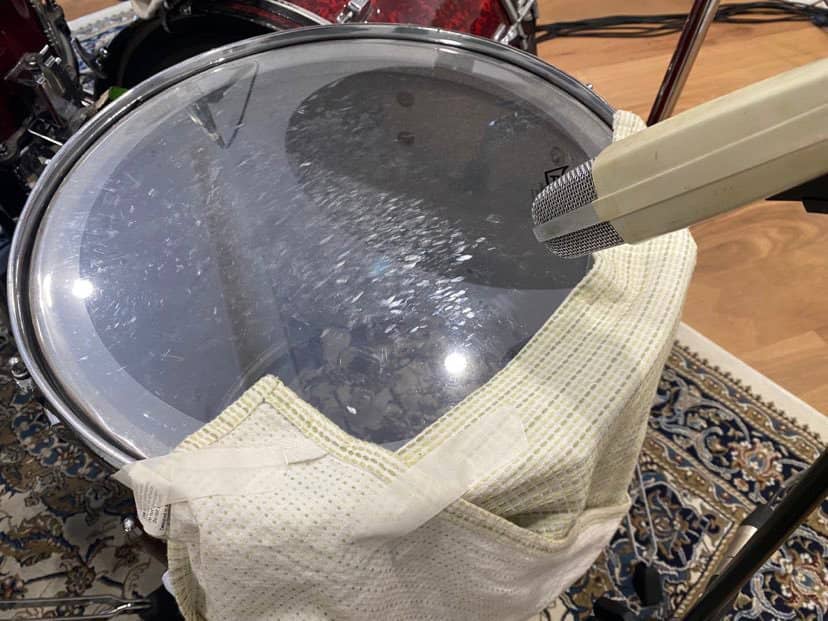
GREEN BULLET MIC
Here’s a final mic technique easter egg for you: place some kind of fun toy mic, I’ll often use this green bullet mic, under the snare near the kick batter. This gives me some snare snap and kick attack. This mic is great because of its midrange focus and its unique, artificial sound. I then use the level control on the mic to drive into a Sansamp pedal that I sit on my desk in front of me and use as an EQ/distortion.
If you ever watch any Tchad Blake videos you will see he often recreates things like this when he mixes — subtly different types of distortion sitting within your drum tones can create unique and incredibly interesting sounds. They don’t even have to be obvious but they can make such a nice textural difference.
Sonora Studio: www.sonorastudios.au






















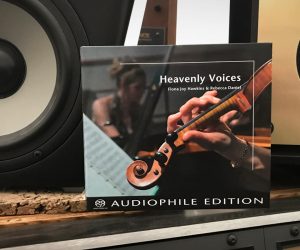

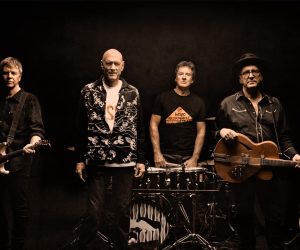


RESPONSES